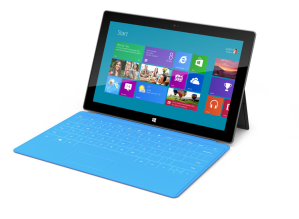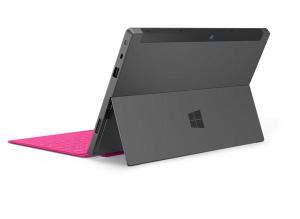Apple, Google and Microsoft have only just finished their events and we are now subjected to the usual fanboi articles from the press. Now, I’ve come to get used to this, articles that feel so unbelievable biased to one of these tech giants over the other two, often stupidly so, but recently, the articles themselves just are not understanding the basics of technology or what’s been going on over the past decade, let alone what appears to be happening right now.
My main gripe though in this post is the lack of understanding what a PC actually is. It seems that journalists and fanbois alike, think a PC is a 1990s desktop PC, that’s simply crazy. In addition, people like gartner and forbes with their market analysis constantly needs to re-asses the definition of a PC in the tech market, simply because PC in its pure form covers the vast majority of devices available.
Mobile is PC
First off, let’s just clarify one thing, a mobile phone or a tablet is a PC. PC = Personal Computer, so mobile devices if anything fit that terminology much more closely than what everyone it seems thinks a PC is, a good old 1990s desktop. Mobile is so personal, and it’s a computer, so it’s a personal computer.
As soon as you grasp this, it becomes clear why Microsoft (who seems to be forever linked with desktop PCs) is starting to make its own hardware, specifically aimed at “mobile” and more importantly, expanding that market away from where the likes of Apple and Google dominate. By that, I mean pure “mobile”, as in more focus on personal, less on the computing aspect.
What’s been going on
Since Apple really turned a mobile phone into a form of PC, the market has been shifting towards smaller, more personal devices, and as such, removes the need for homes etc to purchase a good old desktop machine. What has been a complete success is actually removing functionality and reducing computing power. I for one could do more with an original windows mobile pda device than I could do with an iPhone for example. Hell, I used to be able to control servers from that thing. But, the usability of it wasn’t simple, and to be honest, the vast vast vast majority of users use nothing more than a web browser and a handful of simple applications on mobile devices. Because of this, Apple made another great innovation, and that was simply making the phone bigger, so it was easy to use on the sofa. Enter the iPad.
Tablets really are where the majority of day to day users now carry out their computing (if not still on their mobile phone). The reason is because most tablets again, with the web, and access to good apps provides everything the majority of users understand. However, sales if iPads etc seem to have reached that point of market saturation, and that’s not a surprise, end consumers cant keep on buying, buying and buying the same thing. In essence, the PC market is now moving away from desktops to tablets, but that’s still the same PC market.
Microsoft trying to be different?
With the release of Windows 8 and the Microsoft Surface, Microsoft essentially said “yes, we are very late to mobile devices, but we have a vision were these devices are just as powerful as the desktop you used to have”. Now the reason this isn’t that popular is because the vast majority of users doesn’t need that power or complexity. Hell, the tech journalists don’t even understand that’s what Microsoft is trying to do, nor why.
However, the Surface Pro device hit some notes with large chunks of the mobile PC market, and that chunk was focussed around productivity. Though the majority of users out there don’t need to be productive, there is a market for people who are productive and want productivity from their devices. How many people do you know (in business) who turn up with their iPad. They may make some notes on there, but then when it comes to carrying out anything worth doing, pull out a laptop that appears to be a number of years old? Essentially that user is now carrying two devices around with them? That’s not the point of tablet or mobile computing is it.
Microsoft therefore tried to provide for that niche market, in the hope to get a foothold I believe and then expand that to us daily users. It’s taken until Windows 10, and the most recent launch event from Microsoft to really start to show how effective this approach is. With the Surface Pro 3, and Windows 10, Microsoft delivers a device that is Mobile. Its not an old desktop vision for the company or Windows, rather its Mobile and personal first, however with no computing or productivity compromising.
Going forward
Who knows what the market will do. However, Microsoft must be hitting the right notes with sales of Surface Pro devices doing well. You have to just look at Apple and the iPad Pro to see that Apple and Google are aware that Microsoft approach will see them selling devices and potentially taking away market share from them both. After all, why carry an iPad and a Laptop? Or have an iPad and an old desktop machine at home or work when you can have a Surface Pro tablet that is a tablet, your laptop and with a “dock” accessory, replaces your desktop machine too. That’s three devices in one?
For businesses, Surface Pro allows them to provide a single device to their employees, and takes away an utter nightmare regarding provisioning of hardware, policies, security, ISMS etc etc. For consumers it brings the same common sense approach. Why have two/three devices? Why not have a tablet that is my laptop and desktop? Apple and Google have spotted this is a real threat, hence the release of their own “pro” versions of their tablets, though neither has the innovation here or capability to compete with Microsoft Windows 10 or its power on a mobile tablet.
We see that Microsoft is going further with this, especially with Windows Phone 10 and “Continuum” enabling your Phone to replace your desktop with the simple connection to a dock device! That’s your phone powering a real desktop scree,, keyboard and mouse, allowing any user to be productive with just their phone. Enter universal apps from Microsoft Windows 10 and you really see that Microsoft is banking on mobile pcs as actual computing productivity devices, not just personal devices. This theme continues with Surface Book, a laptop first, that can be your tablet (detach the screen) or desktop replacement.
What’s clear, is that the “mobile” market is the PC marketplace, and that mobile appears to be now embracing the need for productivity and computing power. With the market now moving that way, is Microsoft on the right path to take pole position in our computing lives again? Is Microsoft devices along with Windows 10 on the right path, which is all about mobile computing experiences across a range of devices, providing us with real freedom of choice on how to carry out our computing activities while not compromising on productivity or power?
In a recent article in the daily telegraph (Best of luck Microsoft, but the Surface Book isn’t going to save the PC) I couldn’t but think “Oh my God this guy just doesn’t have a clue”. If you think a laptop is a traditional “PC pitch” from Microsoft then you don’t have a clue about what has been going on, what a PC really is or what we are seeing from the tech giants or the marketplace. To be fair though, graphs showing PC sales don’t get it either, they focus on traditional desktop machines, which is a narrow view of the PC market.
One thing we must also remember is that a desktop is easy to upgrade. Many many many consumers out there have old desktop machines and simply update them. The same can be said of businesses, with simple upgrades to RAM, most desktop machines have their life extended quite considerably. Throw into the mix that you can still run Windows 10 on these devices and why do you need to buy a desktop as often as any other device.
The traditional desktop may not be the entire market anymore, but as for the “PC” market, it is simply growing and growing with many more devices delivering personal computing experiences. Dominating the PC market is still the playing field, the devices just look different!






Recent Comments